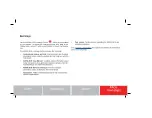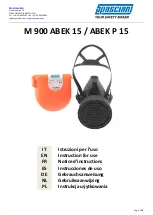
•
Cover the device under test (DUT) to protect the operator from
fl ying debris in the event of a system or DUT failure.
•
Double-insulate all electrical connections that an operator can
touch. Double insulation ensures the operator is still protected
even if one insulation layer fails. Refer to IEC 61010-1 for
specifi c requirements.
•
Make sure all connections are behind a locked cabinet door or
other barrier. This protects the system operator from accidentally
removing a connection by hand and exposing hazardous
voltages. Use high-reliability fail-safe interlock switches to
disconnect power sources when a test fi xture cover is opened.
•
Where possible, use automatic handlers so operators are not
required to access the DUT or other potentially hazardous
areas.
•
Provide training to all users of the system so they understand
all potential hazards and know how to protect themselves from
injury.
•
In many systems, during power up, the outputs may be in an
unknown state until they are properly initialized. Make sure the
design can tolerate this situation without causing operator injury
or hardware damage.
Connect the instrument
Important test system safety information
This system contains instruments that can produce hazardous
voltages. It is the responsibility of the test system installer,
maintenance personnel, and service personnel to make sure
the system is safe during use and is operating properly. You
must also realize that in many test systems a single fault, such
as a software error, may output hazardous signal levels even
when the system indicates that there is no hazard present. It is
important that you consider the following factors in your system
design and use:
•
The international safety standard IEC 61010-1 defi nes
voltages as hazardous if they exceed 30 V
RMS
and
42.4 V peak, or 60 VDC for equipment rated for dry
locations. Keithley Instruments products are only rated for
dry locations.
•
Read and comply with the specifi cations of all instruments
in the system. The overall allowed signal levels may be
constrained by the lowest rated instrument in the system.
For example, if you are using a 500 V power supply with a
300 VDC rated switch, the maximum allowed voltage in the
system is 300 VDC.
•
Make sure any test fi xture connected to the system protects
the operator from contact with hazardous voltages, hot
surfaces, and sharp objects. Use shields, barriers, insulation,
and safety interlocks to accomplish this.




































